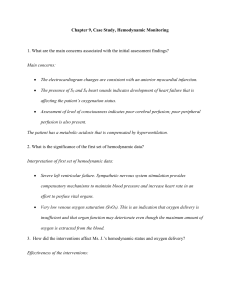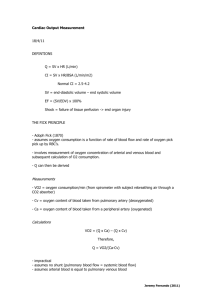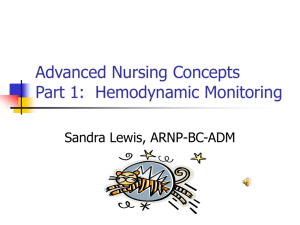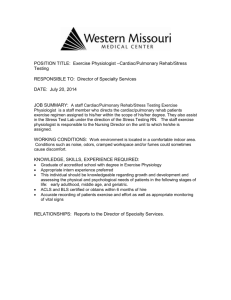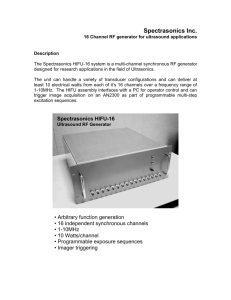Hemodynamic Monitoring
advertisement
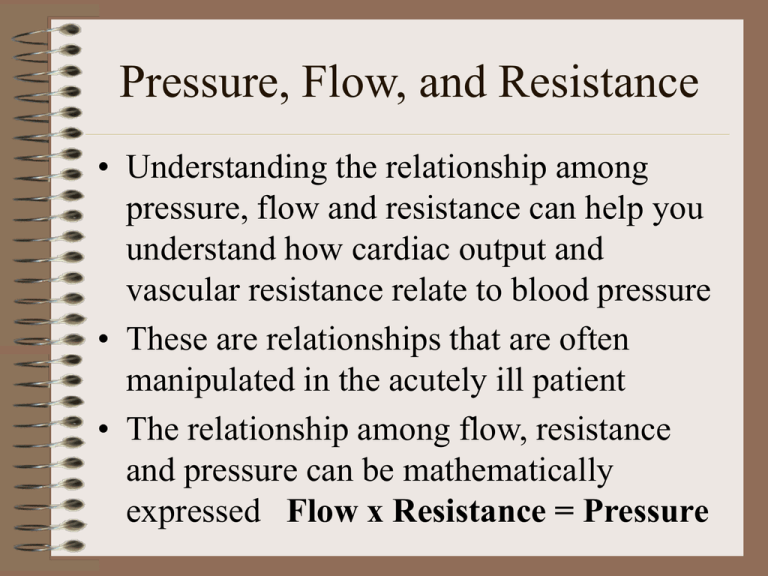
Pressure, Flow, and Resistance • Understanding the relationship among pressure, flow and resistance can help you understand how cardiac output and vascular resistance relate to blood pressure • These are relationships that are often manipulated in the acutely ill patient • The relationship among flow, resistance and pressure can be mathematically expressed Flow x Resistance = Pressure Pressure, Flow, and Resistance • Flow and resistance can be adjusted to keep pressure steady • The flow in the cardiovascular system is the CO, the resistance is the afterload and the pressure is the blood pressure Normal Pressures • When a catheter is passed through the venous system into the heart and pulmonary artery, certain pressure readings and wave forms are measurable • During each individual section to follow, we will be looking at normal waveforms displayed depending on type of hemodynamic monitoring being used eg. arterial waveforms, CVP waveforms and PA waveforms • To end this section I will leave you with the normal values. We will revisit them again during the sections to follow Hemodynamic Pressures • Central Venous Pressure (CVP) 0 – 6 mm Hg • Right Arterial Pressures (RAP) 0 – 6 mm Hg • Right Ventricular Pressures (RVP) Systolic 20 – 30 mm Hg Diastolic 2 – 8 mm Hg RV End Diastolic 2 – 6 mm Hg • Pulmonary Artery Pressures (PAP) Systolic 20 – 30 mm Hg End diastolic 8 – 15 mm Hg • Pulmonary Artery Wedge Pressures (PAWP) ~ (PAOP) ~ (PCWP) = 5 – 12 mm Hg Hemodynamic Monitoring • The high acuity patient has complex nursing needs • The nurse requires a working knowledge of the determinants of cardiac output, preload, afterload, and contractility • These determinants of cardiac output will be linked to the data available through hemodynamic monitoring with a pulmonary artery line • This knowledge, coupled with astute observation and sharp assessment skills, can guide critical thinking at the bedside and provide a higher level of nursing care for the high acuity patient
